Florencia & Kurt
Explore Peru
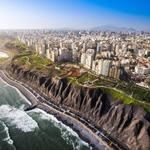
Lima
Downtown Lima has plenty to offer! Whether it's the world-class food, colonial-style architecture or surfing, this Peruvian gem really provides something for everyone. More information in our recommendations section. City Tour: https://www.tourenlima.com/lima-city-tour.html Lima Bus Tour: https://www.tourenlima.com/turibus-lima-tour.html Lima & Barranco Bus Tour: https://www.tourenlima.com/lima-turibus-y-barranco-tour.html Night City Tour: https://www.tourenlima.com/turibus-lima-by-night.html Magic Water Circuit: https://www.tourenlima.com/magic-water-circuit.html
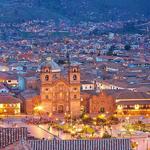
Cusco
The historical capital of Peru! Sitting in the Peruvian Andes mountains, it once was the capital of the Incan empire until the 16th-century Spanish conquest. Cusco city is about 1 hour and 20 minutes drive from the wedding venue, this is were the airport is. If you have the time, you should enjoy a couple nights in this gorgeous city! It is hard to describe the magic feel and energy this city transmits! There are city tours and plenty to do here (Cathedrals, Qorikancha, Sacsayhuaman, etc) Places to see in Cusco: Plaza de Armas, Qorikancha Temple, San Blas Church, and the Inca ruins: Sacsayhuaman, Quenko, Tambomachay and Puka Pukara.
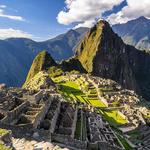
Machu Picchu
This 15th-century Inca citadel, now one of the new 7 wonders of the world, is most definitely a must do! Prepare to be amazed! Located in the eastern Andes mountain range of Peru at 7,970 ft a.s.l, it is 50 miles northwest from Cusco city and has a tropical mountain climate. To access Machu Picchu, you will need to take a train from Cusco or Ollantaytambo to Aguas Calientes (now known as the town of Machu Picchu). Once there, you need to buy a bus ticket to get to the entrance of the ruins. This bus ride takes approximately 30-35 minutes. Entrance to Machu Picchu is controlled so you must buy your tickets in advance with a specified day and time; we recommend contacting a travel agency and purchasing tickets 3 to 4 months in advance. If you are interested in hiking to the top of the mountain, you need to buy the option that says: "Machu Picchu + Huayna Picchu Mountain."
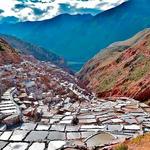
Maras
Since pre-Inca times, salt has been obtained in Maras by evaporating salty water from a local subterranean stream Also check out the mountain view experience: https://www.instagram.com/mountainviewexperience/?hl=de
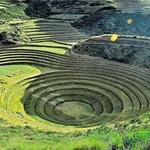
Moray
Moray was an Inca agricultural research center where crop experiments were carried out at different heights and microclimates.
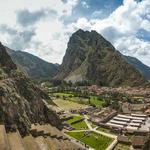
Ollantaytambo
The Ollantaytambo ruins are one of the last strongholds of the Incas. Usually you would do a tour to visit Maras, Moray and Ollantaytambo together.
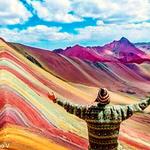
Vinicunca, Montaña de los 7 colores
This rainbow-like appearance is created by the sediment of minerals throughout the area giving the mountain the turquoise, lavendar, gold and other colors. It was only recently discovered due to the snow melting revealing the hidden gem that’s still considered holy by many until this day.
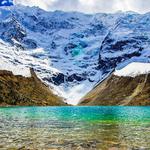
Laguna Humantay
Laguna Humantay is one of the most spectacular landscapes along the Salkantay Trail. A turquoise lagoon located at the base of the Humantay, one of the snow-capped mountains in the Vilcabamba mountain range.
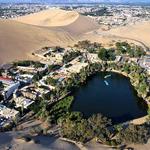
Huacachina Oasis
Huacachina is a desert oasis and tiny village just west of the city of Ica. At its center are the green waters of the Huacachina Lagoon, surrounded by palm trees. The lagoon's shores are dotted with bars and clubs. Dune buggies run across the high, rolling sand dunes surrounding the village. We encourage you to take a buggy ride, go sandboarding down the dunes and stay there to witness one of the most amazing sunsets you will ever see.
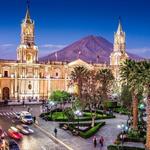
Arequipa
Arequipa is dominated by its volcanoes. This is apparent in the walls of its streets, buildings and churches; in the wonderful geography that has created a fertile valley and one of the world’s deepest canyons. Imagine yourself enjoying the warm waters of a thermal pool as you look out towards green mountains crowned with perpetual snows.
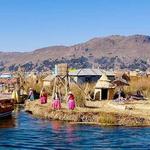
Lake Titicaca
According to legend, everything began in Puno when Manco Capac and Mama Ocllo emerged from Lake Titicaca to found the Inca dynasty. 'Titi' para Peru, 'caca'para Bolivia :) Puno, dominated by Lake Titicaca, the world’s highest navigable lake, is the capital of Peru’s folkloric tradition. Puno is famous for the hospitality of its people and the joyfulness of their festivities, dances and rituals. In Puno, traditions are expressed in celebrations that explode into fiestas every day of the year. Go and celebrate!
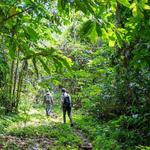
Tambopata - Amazon Rainforest
Thanks to this variety of well-preserved habitats, Tambopata is one of the most biodiverse areas in the world. There are more than 1,000 species of butterflies, 100 species of mammals, 600 species of birds, and hundreds of species of trees and plants! During your visit, you’re likely to see Monkeys, Parrots and Macaws, Caiman, Toucans, and maybe you can spot a puma or jaguar. It is on the shortlist of “must-see” nature destinations in Peru and South America. Because of that we highly recommend you to travel to Tambopata. Tambopata is a river, a province, and a national reserve. It is reached through the gateway city of Puerto Maldonado.
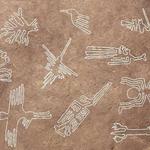
Nazca Lines
Nazca lines one of Peru's greatest mysteries. The Nazca Lines are a collection of giant geoglyphs—designs or motifs etched into the ground—located in the Peruvian coastal plain about 250 miles (400 kilometers) south of Lima, Peru. Created by the ancient Nazca culture in South America, and depicting various plants, animals, and shapes, the 2,000-year-old Nazca Lines can only be fully appreciated when viewed from the air given their massive size.